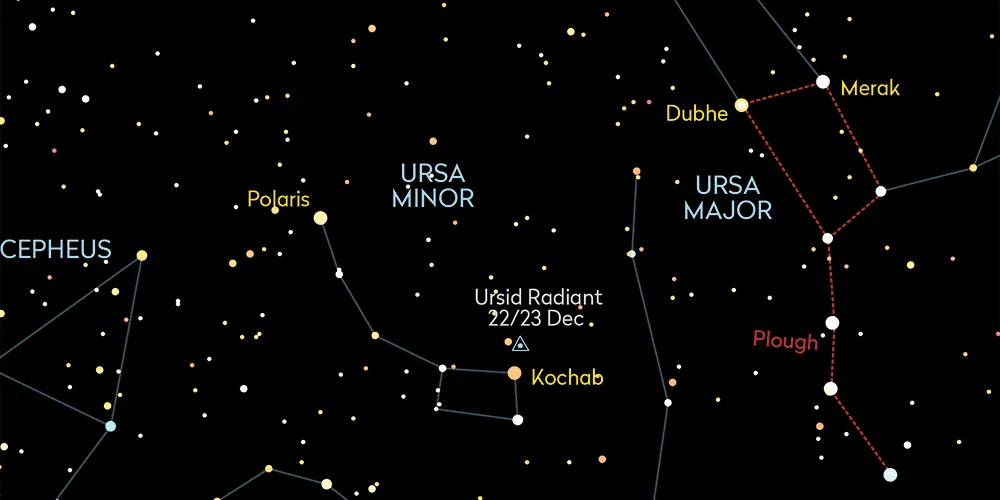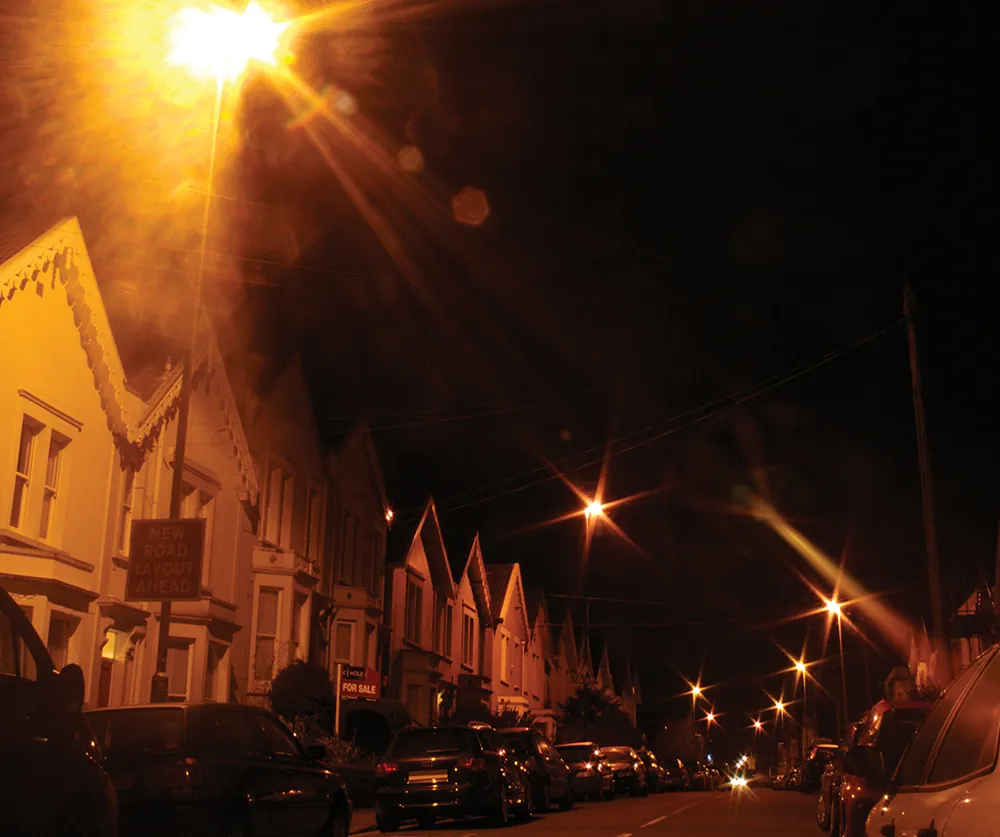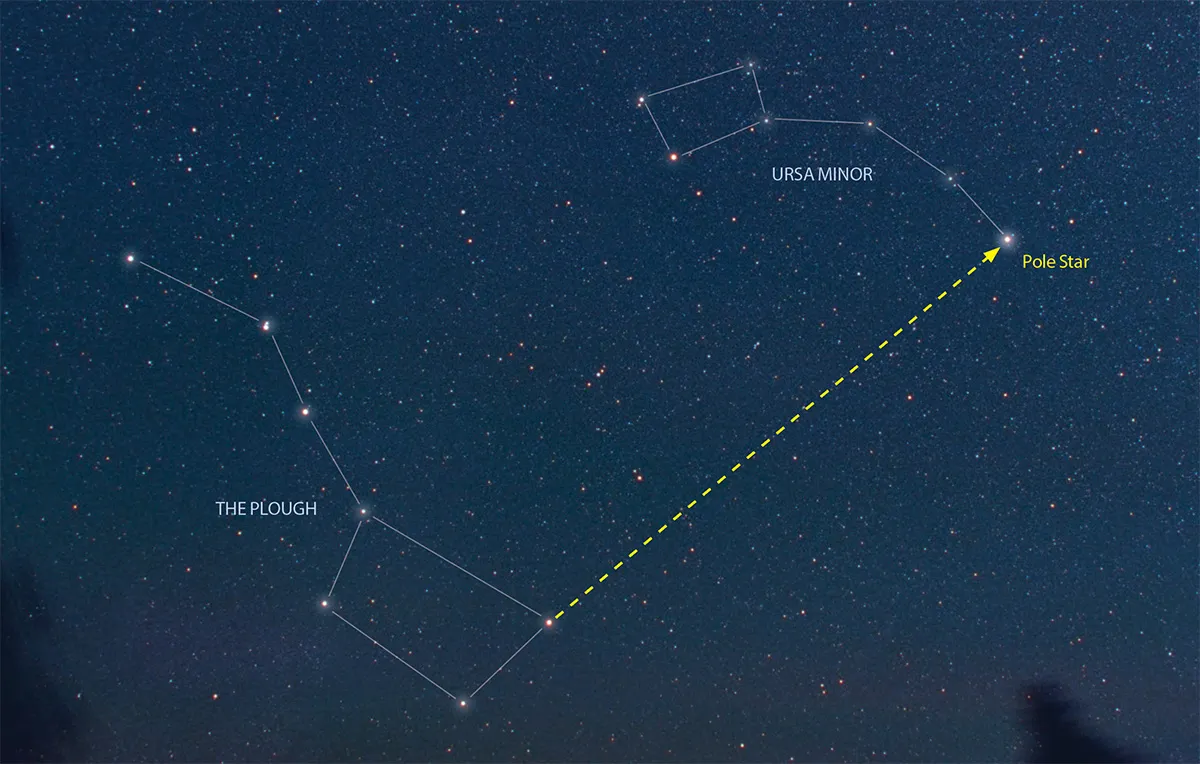The Ursid meteor shower takes place from 17–26 December, with peak nights occurring on 21/22 and 22/23 December.
In 2023, however, the peak of the Ursid meteor shower occurs when the Moon is a bright waxing gibbous, which will make it difficult to spot a meteor.
The Ursid shower has its radiant position - the point in the sky from which the meteors appear to emanate - close to the star Kochab (Beta (β) Ursae Minoris).
The fact that the Ursid meteor shower is happening, though, makes for a great excuse to get the family wrapped up warm and looking up at the dark winter night sky as Christmas approaches.

How many Ursid meteors will we see?
The Ursid meteor shower has a typical peak rate of 10 meteors per hour and, like the Quadrantids which peak early in January, the maximum activity period is short.
For the best views you need to be observing within 12 hours of the peak.
But while the Moon was out of the way during the 2022 Ursid meteor shower, in 2023, the lunar glare will present problems when trying to observe.

How many Ursid meteors will be visible?
While the Geminid meteor shower grabs the December limelight, the Ursid shower tends to take a back seat.
The peak zenithal hourly rate (ZHR) of the Ursid shower is around 10 meteors per hour.
Zenithal hourly rate represents the number of meteors an observer could expect to see during peak activity, but under perfect conditions: clear, dark skies away from light pollution.
Given these caveats, if you're out in the field doing a spot of meteor watching, you should expect the actual number to be lower.
And this is especially the case in 2023, with that bright Moon in the way.

How to see an Ursid meteor
Meteor showers are a great astronomical phenomenon to observe because they are best seen with the naked eye, meaning you don't require any fancy equipment to spot them.
This also makes them great to get kids involved: even if they can't stay up until peak activity, it's a good chance to get children looking up at the night sky. For more on this, read our guide to stargazing for kids.
Find a place that is dark and away from light pollution, such as a location away from towns and cities, provided it is safe to do so and within COVID restrictions where you are.
If you have a back garden and live under dark skies, you already have an advantage over many other meteor observers, as you can observe from the comfort of your own garden.

Turn off all the lights in your house to get things really dark. Avoid using lights such as torches and mobile phones as this will spoil your natural night vision, which develops as your eyes become attuned to the darkness.
This is good advice whatever form of stargazing you're undertaking, as it will help you see more stars and other phenomena in the night sky.
It will take around 20 minutes for your eyes to dark adapt, but hopefully after a little wait you should start to see meteors shooting across the sky.
Remember: clear nights are cold nights, especially in December! You will be sitting still for a long time, so wrap up warm, bring something to eat and perhaps a hot drink as well.
It's also a good idea to use a reclining chair to prevent neck-ache from looking up at the night sky for long periods.

Where do I look in the sky to see an Ursid meteor?
The area of the sky from which a meteor shower appears to originate is known as the 'radiant'. For example, the Geminids are so-called because they seem to radiate out from the constellation of Gemini.
The Ursids appear to originate from Ursa Minor, the constellation in which Polaris, or the Pole Star, can be found.
Read our guide on how to star hop to help you locate Ursa Minor using the Plough asterism.You can also use our guide on how to find the North Star.
If you're still struggling, you can always download an astronomy app to help. Just remember to turn your phone to red light mode to avoid spoiling your dark adapted vision.
If you manage to see a meteor streaking across the sky between 17–26 December and appearing to originate from Ursa Minor, chances are you've seen an Ursid.
This guide originally appeared in the December 2022 issue of BBC Sky at Night Magazine.
